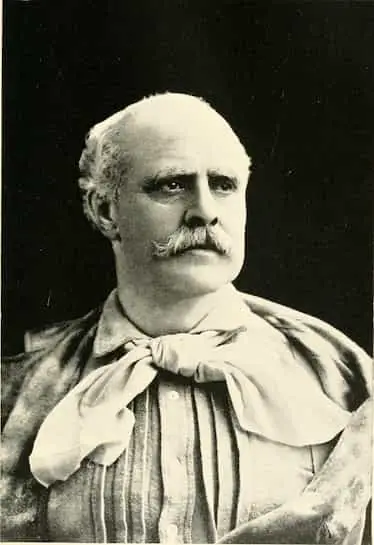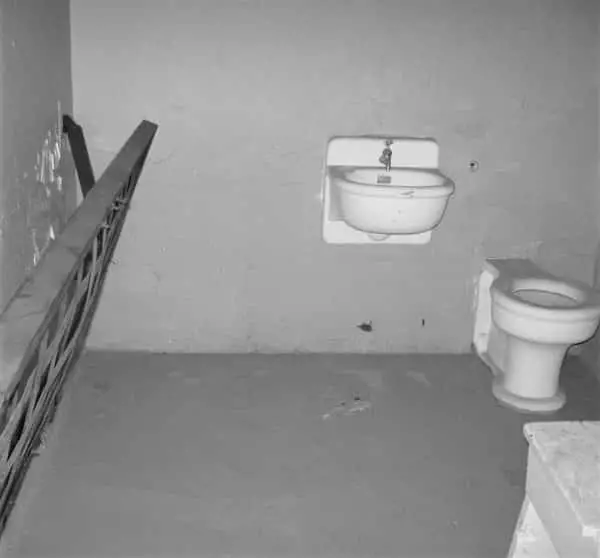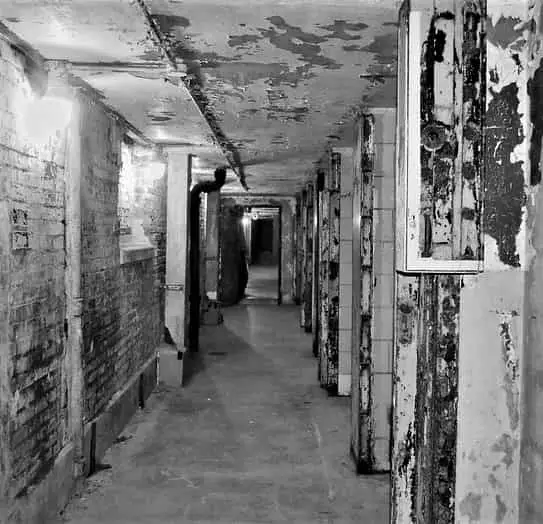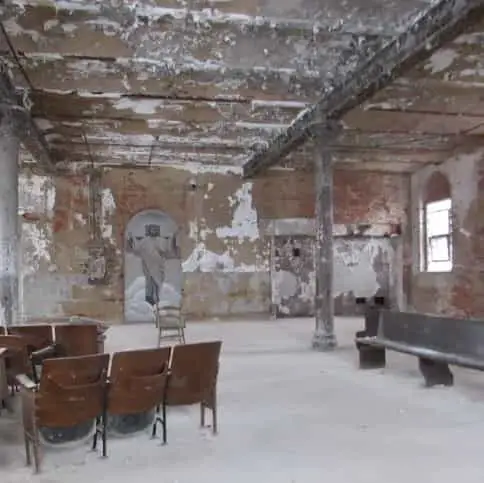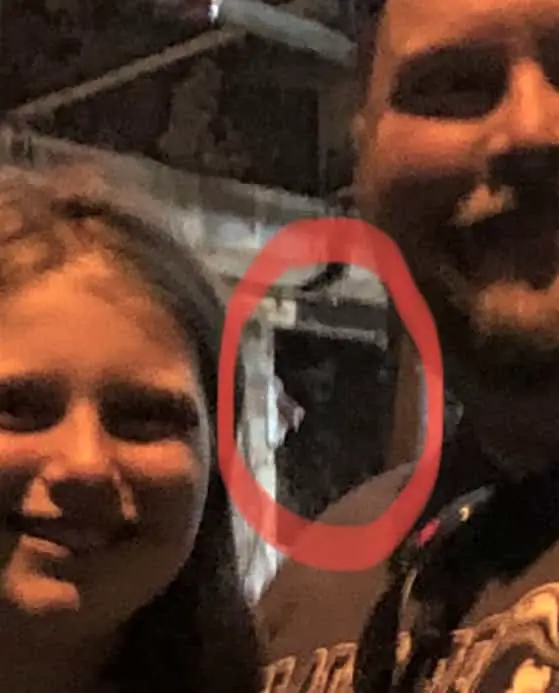Mansfield Reformatory
Mansfield Reformatory, aka Ohio State Reformatory, is said to have been a particularly inhumane environment for the prisoners. That resulted in Mansfield Reformatory today being one of the most haunted places in the US…
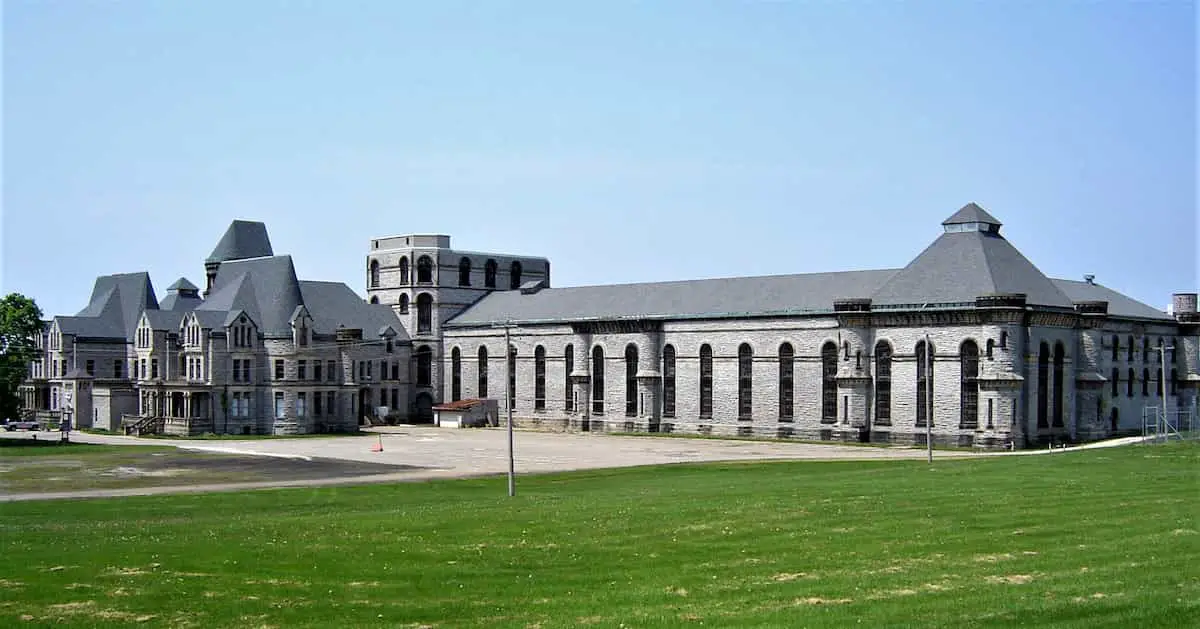
Ohio State Reformatory
Correction facilities all over the world are filled with suppressed anger, unspoken despair, and insufferable anguish. Through the centuries they have gathered long lists of sad stories and tragic characters. Death was always a loyal companion to most in these godforsaken environments… And still is today. Life in prison is hard.
It is not difficult to see a connection between the nature of the activity in a prison and paranormal activity. Many stories about ghosts and hauntings originate in violent and unjust deaths, and nowhere are those more common than in prisons. As a result, many of the world’s most haunted places are those where people have been incarcerated… In older times castles and strongholds, in the last few hundred years in state prisons and reformatories.
In the US there are haunted prisons in every state… From Alcatraz in San Fransisco to Eastern State Penitentiary in Philadelphia, from Wyoming Territorial Prison in Laramie to the Old City Jail in Charleston.
But maybe the most terrifying of them all is the Ohio State Reformatory in Mansfield, Ohio
A short history.
The beginning of the Mansfield Reformatory can be dated as far back as the 1860s when 30 acres of land were purchased for the new institution. Ohio already had two facilities, the Ohio State Penitentiary, in Columbus which functioned as a high-security prison, and the Ohio Reform School outside Lancaster for boys between 8 and 18 years of age. But the state needed something in between. So in 1886, the construction of the Mansfield Reformatory started. It was intended as a Reformatory halfway between a prison and the Boys’ Industrial School. The inmates were supposed to be prepared, educated, and reformed to be able to retake their positions in society. They were supposed to be first-time offenders only, and the age of the inmates should be between 18 and 30.
Construction works didn’t finish until 1910 because of problems with funding. But already in September 1896, the first 150 men were transferred. These, together with other prisoners for the fifteen years to follow, helped with the completion of the building.
The architecture, by the Cleveland architect Levi Tucker Scofield, was a result of the ideas of the time. Just by being in a morally uplifting environment, the prisoners were supposed to better themselves. Especially since the inmates were young and adaptable.
From a model prison to Hell’s forecourt.
The Reformatory character changed after a few decades though. Although the intention always was to take on younger prisoners, not to have inmates that were convicted for the worst felonies, and to continue reformation programs to at least some extent, by 1930 the Mansfield Reformatory had become a real high-security prison, although for younger male interns.
Between 1920 and 1930, the average population in federal prisons tripled nationwide and between 1930 and 1940, it nearly doubled again. And after the devastating fire in the Ohio Penitentiary in April 1930, where 322 inmates were burned to death, the Mansfield Reformatory came under even more pressure.
By then cells that were built for one prisoner housed two, and cells for two housed three or more. The sanitary problems were evident, and that definitely didn’t help when trying to keep interns and staff safe.
From the early sixties, Mansfield Reformatory was classified as a maximum-security prison.
Testimonies.
Two prison guards were killed in the line of duty on prison grounds, Urban Wilford in 1926 and Philip Orleck in 1932. In 1948, two paroled inmates, Robert Daniels and John West, killed the prison farm superintendent John Niebel together with his wife Nolanda, and daughter, Phyllis. Before that, they had killed four more and injured several.
But the inmates themselves took the hardest blow. In the hundred years of activity, over 200 interns died in the Mansfield Reformatory. Some of them by suicide but most were assassinated by fellow convicted. Diseases also flourished in the cramped cell blocks.
One of the worst penalties was the so-called hole. These were Solitary Confinement cells, with only a toilet and a sink, but no bunk. The convict was fed only bread and water and had to sleep on the floor, sometimes naked.
– There were so many cockroaches that you had to put toilet paper in your ears and nose to keep them out, said one inmate. The ones that got into your mouth just counted as an additional protein supplement.
Once, two inmates were put in the same isolation cell, dimensioned only for one person, After three days only one of them came out. The other was dead, killed by his cellmate.
The end and closure.
In 1978, the Counsel for Human Dignity filed a federal lawsuit on behalf of the inmates. At that time there were around 2500 interns on-site, while the official capacity was 1900. The lawsuit claimed that prisoners had to live in “brutalizing and inhumane conditions.”, and thus their constitutional rights were being violated.
It took the court five years to agree upon a consent decree. The officials were to improve conditions while preparing for the closure of the Manfield Reformatory by 1986. The closing date was then extended and the prison was finally closed in 1990.
While still officially a first-offender prison with convicts between 18 and 30, many exceptions from this rule were made continuously.
Gary Mohr, former director of the Ohio Department of Rehabilitation and Correction, reformed the whole organization in the last second half of the 80s. A Decentralized Management system was implemented, and not only in the Mansfield Reformatory but in all the state. It supposedly diminished problems in the prison and created a safer and calmer environment.
Many inmates from that time, do not always agree, though. They generally had to arm themselves at all times with razor blades, pens, and other self-made weapons for defense. Mansfield Reformatory was a very violent and unsafe place. Injures like cut wounds, and traumas to the head, arms, and legs after disputes were common. Murders occasionally happened within the prison, and they continued even after the reformed management was in place.
The many possible ghosts of Mansfield Reformatory.
So, finally to the ghosts.
The many stories about hauntings were told between inmates and guards already long before the prison closed. Footsteps, whispers, thuds, and other strange, unexplainable noises could be heard from time to time. The many deaths within the premises make it difficult to determine who this ghost really is. Or even if it’s a single, definable entity, many entities, or just the building itself.
There are locations though, that are more probable than others to produce paranormal phenomena.
- One such place is the so-called called “Jesus Room” in the west wing, accessible via a staircase off of the west cell block. It’s named so after a big Jesus painting present in the room.
- Another spot is the West Attic where supposedly banging and scraping can be heard even in broad daylight.
- There is a room with a chair on the third floor of the entrance building. This is a blind room with no windows, and with just one piece of furniture, namely the wooden chair. It is said that if you close the door and turn off the light, the chair will have moved when you come back.
- The hole, the solitary confinement cells.
- The old hole under the barber at the east diagonal. This part is closed to the public, but people who have set foot there say that it’s the creepiest part of the whole prison.
The strange death of Helen Glattke.
Arthur Glattke was the warden of the Mansfield Reformatory from 1935 to 1959. He was much liked and respected by both the inmates and his staff. His wife Helen, born Bauer, was a beautiful woman and they and their two sons lived on the premises together with a few other families in managerial positions.
Around 10:15 Sunday morning, November 5, 1950, Helen Glattke was getting ready for church. She reached up to her closet shelf for her jewelry but for some reason, she put her hand on a hidden .32-caliber semi-automatic handgun. The weapon fell to the floor but by doing so it accidentally fired a bullet into her left lung.
She died at Mansfield General Hospital two days later.
Strangely, no outside investigation was carried out, and the death was labeled an accident. A number of gun experts stated that it is “very unlikely that a 32-caliber semi-automatic pistol could have discharged in the manner stated in the official account”. And the odd facts surrounding the case made rumors spread like wildfire inside the prison.
“Helen could have found her husband with another woman, and Arthur had killed her to avoid a career-damaging divorce.” Arthur died nine years later in a heart attack at the age of 57.
Soon after the death of Helen, many inmates, as well as guards, reported seeing the Ghost of Helen. The distinctive odor of her rose-scented perfume can be felt in her former quarters in the Entrance building.
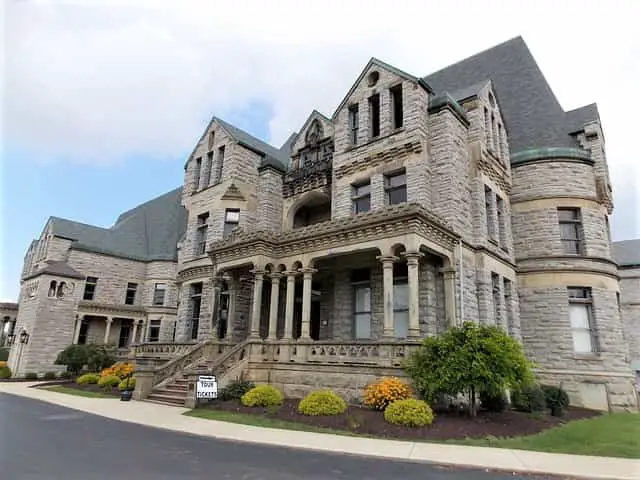 What do the YouTube experts say?
What do the YouTube experts say?
If you search Ohio State Reformatory or Mansfield Reformatory on YouTube, you’ll find a long list of videos. From self-proclaimed ghost hunters with just a cell phone to professional TV teams with all kinds of electrical gadgets and EMF toys. They are more or less all made in the same manner. And that’s the manner in which all the other ghost-hunting videos from all over the world are made as well.
Darkness, flickering lights from flashlights, scared faces, night-vision cameras, and the pulsating EVPs that every now and then say… “scratch”, which is interpreted as “Mike” or “Death”… And all the ghost hunters confirm in a low voice that:
– This is a haunted place… I feel uncomfortable here… There definitely is someone here with us…
But from the YouTube clips, there’s really not much certainty at all. We have many, actually loads of testimonies, audio recordings of voices, and videos of almost undetectable shadows moving around. But many uncertain, unconvincing testimonies do not add up to one true, convincing testimony. That’s just the way it is.
The Special Bias problems with the Mansfield Reformatory.
The Mansfield Reformatory is a very popular ghost hunting site. And the reasons are two:
- The structure itself. Even though the wall around it is gone, and so are all of the adjacent structures, the main building is awesome. The Romanesque- and Gothic style was inspired by European castles. Today, the totally grey facade, with its black, huge windows, gives it an eerie, uncanny atmosphere. It’s not strange that another popular name for the Ohio State Reformatory was Dracula’s Castle. And inside, with its cramped prison cells, long corridors, old, molded walls, and rusty steel bars, it’s even worse. It’s a scary place.
- The management focuses quite a bit on ghost hunts and other paranormal events. They take part in national and international events with various spooky themes, and they actively try to profile the Mansfield Reformatory as a haunted location.
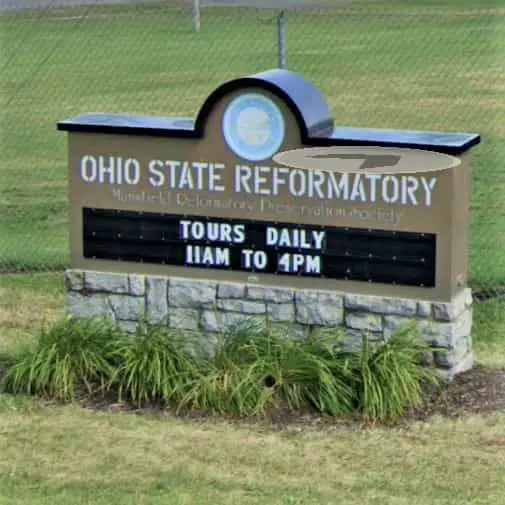
The new fashion of having old prisons being converted into haunted amusement parks has met criticism. Some social workers, scientists, and historians call it a distraction from the grim realities of the criminal justice system. We turn a violent and tragic past into a tourist attraction.
This kind of activity makes it even more difficult to find the real deal under all the fluff. Every Youtuber wants substance to get visitors and likes, and if the big channels are ready to fake footage and recordings to make a good show, what should prevent the less resource-full small YouTube channels to do so as well? We need to try to penetrate the obvious fakes to see if we can find something true underneath.
Paranormal investigations of Mansfield Reformatory.
Real, true, skeptical investigations are always hard to find. Here’s a list of the famous TV channels that have had their ghost hunting program series covering Mansfield Reformatory on various occasions:
- Ghost Hunter (Sci-Fi channel) was there in 2005
- Ghost Adventures (Travel Channel) was there in 2009
- Ghost Hunters Academy (SyFy) was there in 2009
- Inside Secret America (National Geographic) was there in 2013
- Ghost Asylum (Destination America) was there in 2015
- BuzzFeed Unsolved (BuzzFeed) was there in 2018
- Portals to Hell (Travel Channel) was there in 2020
As you see it’s been quite a flow at the Mansfield Reformatory. But not much solid and useful has come out of it. It’s an endless row of flickering footage, mumbling voices, and the ever-present pulsating EVPs.
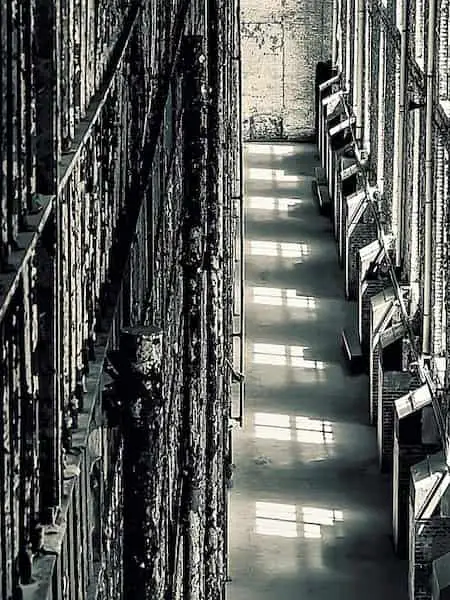
Conclusion
No, sorry but no serious investigation has ever been made in the Mansfield Reformatory. As long as you don’t count the many TV shows that have documented the prison. We just don’t have the facts.
And the main difficulties when it comes to determining if there actually are ghosts roaming the property, are as follows:
- The site is highly commercialized. The Mansfield Reformatory Preservation Society which is the present owner does an incredible job in preserving the property. But they don’t stop there. The goal is to be able to restore all of the interior as well as the exterior of the buildings. So far they’ve completed the restoration of the first floor, but they’d need funding for the continuing efforts. And that’s where the guided tours come in… Guided tours that cover everything from normal tourists visiting, to nightly ghost tours and Shawshank Redemption tours. All of which profit from the rumors the Mansfield Reformatory has of being one of the most haunted places in the US. We just can’t tell if the many stories are legit or if it’s just PR.
- The Mansfield reformatory is a very scary place by itself. Its atmosphere is that of an old haunted castle. And we know that the human brain is easily manipulated. I would say it’s much easier to imagine sounds, shadows, and touching in a vast correctional facility than elsewhere. Especially after dark. And all of the ghost hauntings are carried out after dark.
Janice Urban of the Mansfield Reformatory Preservation Society:
– I’m never afraid in this building. I can walk in here at any time and I’m never uncomfortable at all.
Final words
And I would actually agree with her. I do not feel any special hauntings or any sort of negative energy inside the Mansfield Reformatory. It’s just a fascinating building with a fascinating history… Very sad and disturbing but fascinating. There is no need to add Ghosts and Phantoms to it. It is quite enough just by itself.
The Mansfield Reformatory has its own merits, its own memories, and most of all, its own many real-life stories. We should respect that, and remember her hundred years of history and maybe we can learn something from it.
… But please, make up your own mind.
Check out this photo, and read the article by Ryan Clark.
… I’ve traveled the country seeking out the weird and fantastic. I’ve been to supposed haunted houses and asylums. I’ve searched the skies for UFOs and hunted the woods for cryptids.
Never have I seen anything that made me truly question what I know. And I want to see something. I do. It’d just never happened.
… That is, until I visited The Ohio State Reformatory.
And check out this video. Are the claims credible?
Fun facts
- The east cell block in The Mansfield Reformatory is the biggest free-standing steel cell block in the world.
- Many TV shows and movies have used the intriguing interior of the Ohio State Reformatory for shooting prison scenes. The most famous being The Shawshank Redemption from 1994 (who actually used it for most of the scenography of the film), and Air Force One from 1997. Tango & Cash from 1989 shot various prison scenes inside while the prison was still in use.
- The ground where the prison stands were previously used as a training camp for soldiers in the civil war. It’s been suggested that some of the ghosts derive from that time.
- Warden Arthur Glattke was a creative person. In line with the ideas of the time, he installed loudspeakers and played music in the cellblocks. It was supposed to have a calming effect on the inmates.
- You could say that the film The Shawshank Redemption saved The Ohio State Reformatory. It was planned to be demolished. Then Castle Rock Entertainment needed the location for its film project and the demolition had to wait. After filming had ended, a local group of enthusiasts called The Mansfield Reformatory Preservation Society bought the estate for a symbolic $1. For that price, they are compelled to restore and maintain the buildings.
- Today The Mansfield Reformatory generates $16 million annually.
Conclusion.
It is difficult to say for sure because of all the prejudice and commercial interests in the building. It’s a creepy place, but I don’t see any signs of real paranormal activity.
An extra star just for the awesome environment, and the fascinating history.

… And The Shawshank Redemption is an awesome movie. You should see it if you haven’t already.
sources
- Veronica Bagley / Towards a Public History of the Ohio State Reformatory
- Wikipedia / Ohio State Reformatory
- David Meyers, Elise Meyer / Central Ohio’s Historic Prisons
- Mansfield News Journal / Film eyes murders of OSR farm superintendent family
- Cleveland.com / Haunted Ohio: ‘America’s Most Haunted’ puts the spotlight on the Ohio State Reformatory at Mansfield
- The Repository / Filmmaker explores the paranormal at Mansfield Reformatory, site of ‘Shawshank Redemption’
